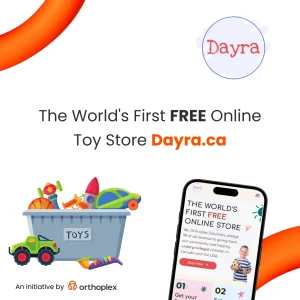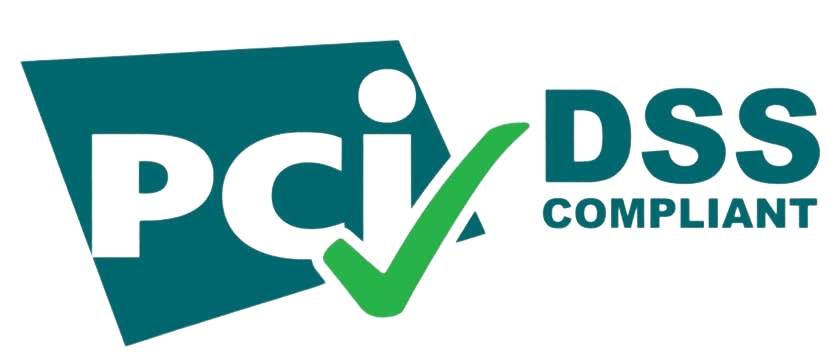The 10 Key Engagement Elements Every Nonprofit Website Must Have
Having a beautiful and well-designed website is a very good start for your nonprofit organization’s online presence and credibility.
But, is this enough?
Unless your audience engages with you and stays on your website for a long time to learn about your cause and mission, you might miss out on tons of opportunities.
So, does your nonprofit organization’s website get enough engagement from your followers or potential donors?
If not, it may be missing some crucial elements that help any nonprofit organization get the results expected from its website.
In this article you’ll discover the 10 key elements you can immediately apply to your website and get rapid and remarkable improvement in your website engagement.
Not only this, you will start building a stronger community for your organization and have a deeper impact on the people you serve.
But first, why does your nonprofit need a well-designed and engaging website?
Share your Story
Whether you’re a small local charity or a large international organization, a well-designed website boosts your visibility, making it easier for people to discover your story and learn about your mission and initiatives.
Manage Fundraising & Donations
Your website can be your primary channel for fundraising by implementing payment gateways such as PayPal, Stripe, and many more.
Communicate with your audience
A website can also be the best channel for communicating your cause, values, milestones, impact, announcements, updates, and important information with supporters constantly, keeping you on top of the minds of your followers and supporters.
Although you might be using many other channels to communicate with your audience like; email newsletters, social media posts, podcasts, ads, or even offline promotional campaigns, your website remains the main source of information for anyone who would want to connect with your organization.
That’s why investing time and effort to maximize your nonprofit organization’s website engagement is always worth it.
Manage the volunteering and hiring process
Also, your website can streamline the volunteering and hiring processes and promote your events. Normally, these multi-step processes are overwhelming, repetitive and consume a lot of time. Instead of starting your hiring process from scratch every single time, you can implement a convenient hiring tool that helps you automate these tasks.
Manage all events in one place
For event management, you can manage all your events directly from your website by through one of two ways:
1. Using a WordPress plugin such as EventON.
2. Embedding an external tool such as EventBrite and embedding it on your site.
Share reports and achievements
Your website also can be your main tool to demonstrate your accountability by providing information about the organization’s finances, results, and how donations are used.
Finally, one key point to always keep in mind; your website has unlimited possibilities that you can leverage once you need them. Because you are always in control of what to show to your audience, how to present your content in a way that aligns with your brand theme and identity.
Also, your website can integrate seamlessly with whatever internal systems you use to organize and manage your data like your CRM, email management software, social media platform, etc. Plus, you can always streamline and automate any portal on your website to save time and money for other priorities.
With that said, If you want to turn your website from just a beautiful website for your nonprofit organization into your organization’s success catalyst, you need to start maximizing its engagement.
The good news is, it’s not that hard. You just need to start implementing the best practices for nonprofit website engagement and you’ll reap unbelievable results.
Now, let’s explore…
The 10 essential engagement elements every nonprofit organization website should have to increase their engagement and impact:
1. Clear Mission Statement:
What’s a mission statement?
Your mission statement is a statement that describes your purpose, who you serve, and your mission and the goals you aim to achieve.
Your mission statement is the heart of your nonprofit website engagement. It should be prominently displayed on your website’s homepage to clearly articulate your purpose, mission, who you serve, and goals concisely. Note that its design should be clear, using your brand fonts and theme.
A great example of how to integrate your mission statement in your message is Ten Tree. This closing brand does a fantastic job serving our planet through planting 10 trees with every single purchase.
They effectively integrate their mission statement, “Planting trees with every purchase,” into their brand identity and marketing strategies, emphasizing environmental sustainability and social responsibility.
Your nonprofit organization can follow their lead by aligning your mission with tangible actions, integrating it into your branding and communication efforts. This will keep your stakeholders engaged in your mission, and build trust and loyalty with your website visitors.
So, how to write your mission statement for your nonprofit organization?
We will give you a simple formula:
We (Your nonprofit organization’s name) helps/empowers (the specific community you serve) to achieve/get (The outcome/transformation/results you help them achieve) through (Your unique mechanism to help them achieve these results).
Now, where to properly implement your mission statement on your website?
- Homepage: The first strategic place you want to show your mission statement is on your home page, ideally at the top. This place ensures any visitor can immediately understand your nonprofit organization’s purpose, who you serve, and how.
- About us page: Your about us page is the second most important page on your website after your homepage. It’s where people go to start trusting you and feel safe to volunteer or support your cause. It’s crucial to have your mission statement shown clearly on your About us page.
- Donation and Volunteering pages: These pages are where people are taking actions that dramatically benefit your organization. So, showing your mission statement on these pages can help them complete the process knowing that they are making a difference in the world.
- Website Footer: Finally, placing your mission statement in the footer can be very beneficial as visitors often scroll all the way down to find your social media accounts and your contact information. Placing your mission statement there increases the chance of your audience reading your mission statement.
2. Compelling Storytelling:
All human beings are so attached to stories. In our childhood we grew up listening to stories from our families. We learn morals through stories. In schools we learn our history through stories. We even love to hear the stories behind any scientific discovery or theory. These stories are so wired to our nervous system. And we have so much attachment to them.
The same principles apply for any brand or organization that needs to stick to the mind of their audience.
Stories have the power to inspire and connect with people on a deeper emotional level more than anything else. And we all know that actions are inspired by emotions in the first place.
So, to get more volunteers, more donors and more supporters, you should leverage the power of your stories.
But what kind of stories should you share?
Share real-life examples of families or individuals you helped, written and video testimonials, and case studies to illustrate the impact of your work and the lives you’ve touched.
How many stories do you need to share as a start?
On your home page, you need to share at least three stories, or links to them, because sharing one may be an odd case, two can be a coincidence, but three, you’ve just proven it!
However, you need to obtain written consent before sharing any individuals’ stories on your website.
This shows you respect their privacy, comply with legal regulations, and mitigate liability risks.
This practice fosters your transparency and trust, allowing individuals to control how their stories are shared by your organization.
Where on your website should you place your stories?
We dare to say, everywhere!
On your homepage, your about us page, your donation page, your volunteering and careers pages, your services… etc.
3. Call-to-Action Buttons:
One of the biggest mistakes we notice while developing nonprofit websites at Orthoplex Solutions is unclear CTA [Call To Action].
Strategically placing clear call-to-action buttons throughout your website helps guide your visitors toward taking the action you want at the proper time. Whether it’s donating, volunteering, or subscribing to your newsletter, make it easy for visitors to get involved.
According to Neil Patel you should place your CTAs properly without being spammy so Google doesn’t downrank your webpage. So, ensure your CTAs are visible and stand out with contrasting colors. Place them naturally within the content flow, and match them to the page’s context.
Also, it’s crucial to use action-oriented language, and regularly perform A/B testing to optimize your CTAs performance and know which one drives the highest engagement.
4. User-Friendly and Secure Donation Process:
Fundraising and donations can be the backbone for your nonprofit organization’s income that supports your cause, fund your operations costs, community activities, and marketing campaigns.
So, when you simplify the donation process on your nonprofit website, this encourages more supporters to contribute to your cause.
But this won’t be effective without implementing a secure and intuitive online donation system with multiple payment options and providing transparency on how donations are used.
There are a lot of factors to consider when it comes to selecting the best donation tool for your website such as:
- Security:
You must ensure the tool you choose has strong security measures and comply with the industry standards. - Flexibility:
Your audience uses many payment methods, so you need to choose a tool that supports various and popular payment methods. - User Experience:
Make sure the donation platform you choose provides a simple and straightforward interface with a few steps to make it easy for donors to complete their donations. - Integration:
The best donation management platforms in the market provide integration features so you can automate the donation process and connect its data with your CMS. - Cost:
All donation platforms come with upfront and ongoing costs. Make sure to consider these ongoing subscription costs, especially as you scale and grow your organization.
One of the most amazing tools we implement for our clients is Bloomerang.
This tool can streamline and improve donation processes for nonprofits by providing a user-friendly donation interface with various payment options, enabling easy setup of recurring donations, and integrating with CRM systems.
It also provides advanced security measures to ensure donor data protection. This tool improves the donor’s experience and the overall donation process.
Check our detailed blog [The Best Donation Platforms for Nonprofit Organizations in 2024] to learn how to choose, implement, and monetize the best donation platform for your nonprofit organization.
5. Transparency:
Transparency is one of the most important keys for volunteers and supporters to stand for your nonprofit organization. So, being transparent about your organization’s finances, impact, and accomplishments on your nonprofit organization website builds impeccable trust and enhances your nonprofit website engagement.
Be consistent with sharing your organization’s financial reports, milestones, and updates to demonstrate accountability and credibility.
We see almost all our nonprofit clients like TFO and HOPA Ports publish their reports regularly every quarter or six months at most. In these reports they share financial information, program updates, future program plan, key performance indicators, and fundraising outcomes.
This transparency in financial health, impact metrics, and donor contributions builds trust and credibility with their audience and dramatically increases their website engagement.
So, where on your website and how should you publish the reports of your nonprofit organization?
The best practice is to have a dedicated “Reports Page” where you make all your reports easily accessible.
You can use a popup on your homepage notifying your visitors about the release of your most recent report.
If you have a large email list and social media following, you can invite your followers to visit your website to check the latest reports.
By making these reports available you significantly increase your trust and engagement with stakeholders.
6. Engaging Visual Content:
People remember what they see more than what they read or hear. To stay on top of the minds of your audiences and consistently get them engaged with you, you need to convey your message effectively through compelling visual content on your nonprofit organization website.
Make sure to use high-quality images, videos, and infographics to tell your story, demonstrate your impact, and connect with them on a deeper emotional level that boosts your engagement. Let’s look at the restaurants and malls industry as an example: many businesses are using engaging visual content to maximize their engagement with their audiences and scale their brands. Here’s one of the most trending and amazing engagement tools they use, Mapplic.
Mapplic is a highly versatile and interactive map plugin that you can apply to your website. It allows users to transform simple images and vector graphics into dynamic, responsive, and fully interactive maps. It’s a top choice for various clients to boost their nonprofit website engagement.
7. Interactive Features:
With the short attention span of anyone who uses the internet, you cannot rely on a passive way of communication. When you build an interactive website for your nonprofit organization and engage your audience by incorporating features such as quizzes, polls, and interactive maps, you dramatically increase your nonprofit website engagement and empower your brand.
Put these interactive elements on multiple pages on your website and encourage visitors to actively participate and explore your website further.
One of the most engaging features to date is adding a chatbot to your website. When we added an AI-empowered ChatBot to our own website, our engagement skyrocketed! Recently, our company started providing ChatBot implementation as a new service to our clients and the feedback has been amazing!
The ChatBot helped their visitors find exactly what they are looking for in a matter of seconds, instead of navigating the whole website for one piece of info!
Another interactive tool you can implement is Videoask. This tool allows you to create an interactive video experience for your visitors where they watch your video then reply to it.
Here are a few examples on how to use Videoask to increase the engagement of your nonprofit website:
- Personalized Welcome Message:
You can use VideoAsk to welcome visitors with a personalized message. Maybe from your brand ambassador or the executive director, explaining your mission and encouraging them to explore your website. - Donor Engagement:
You can Embed a video message on your donation page to explain the donation options, direct them through the process, and also show them how their donations make a difference. - Volunteer Recruitment:
Use VideoAsk to showcase volunteer opportunities and how they can get involved and what to expect.
Make sure to test any tool you choose to use to ensure that it works reliably and that it does not have any negative effect on the performance or speed of your website.
8. Social Proof:
What’s more powerful to build trust than social proof?
Absolutely nothing.
Focusing on showcasing endorsements, testimonials, and success stories from donors, volunteers, and beneficiaries is the best way to build credibility and inspire trust for your nonprofit organization’s website.
Social proof can reassure visitors that their support will make a meaningful difference and they are not wasting time or money by supporting you.
What kind of social proofs can support you most?
- Awards:
One of the most credible sources to gain a robust social proof, and exposure as well, is to succeed in having awards from reputable sources.
According to the National Council of Nonprofits, receiving awards from reputable sources can significantly benefit your nonprofit by enhancing credibility, increasing your visibility, expanding your networks, and facilitating fundraising efforts.
Leveraging these awards effectively by sharing it on your website can amplify your organization’s impact, attract more support, and significantly increase your website engagement as more and more people gain instant trust in your organization. - Case studies:
Detailed case studies showcasing your impact is one of the most robust social proof techniques.
So, wherever you have a great success story, document it, and convert it into a case study.
What to include in these case studies?
Ideally, you will need at least three parts.
A. The status quo: Here you draw a vivid picture of the situation of the community or people you serve before your organization’s intervention.
B. The unique solution: In this part, you need to illustrate your efforts, mechanisms, and procedures undergone to fix the existing problems.
C. The transformation: Finally, by using stats and numbers, you need to explain the results of your solutions. Like how many people were served? How many units were provided? How many donations were made? etc… - Media and press Coverage:
Featuring positive media coverage and articles published about your nonprofit on your website can dramatically boost your credibility.
You can achieve great media and press coverage by having your own PR team or an external partner.
A dedicated PR team can help you with valuable resources that you can publish on your website:
A. Press Coverage: They can help you to get featured in online publications, online podcasts, national newspapers and magazines.
B. Influencer Campaigns: They can collaborate with local influencers to create content about your nonprofit’s mission and impact. And you can share this content prominently on your website.
C. Event Publicity: They can convert a regular event to a marvelous experience for your community. They can get you sponsors and fundraisers. Plus they can create post event highlights, including media coverage, on your website.
9. Mobile Optimization:
According to MobiLoud, 58.21% of website traffic globally comes from mobile devices. Ignoring the UX,user experience, may hinder half of your online effort! It’s essential to ensure your website is mobile-friendly, and your visitors can have easy access to all that they need on your website.
It’s also important to optimize your site for various screen sizes and devices to provide a seamless browsing experience for all visitors. That’s why at Orthoplex we use one of the best in class website builders, Elementor Pro.
Elementor Pro gives us so much control over the website’s responsiveness. It allows us to easily create a clean and unique user experience on all device sizes to help visitors enjoy their time using your website or app while staying engaged.
So, what to check with your web development company, post-development, to make sure your nonprofit organization website is fully optimized?
a. Responsive Design:
Your website must adapt dynamically with different screen sizes and work seamlessly on any internet browser.
b. Page Load Speed:
According to Google, most users expect a website to load in 3 seconds or less!
So, if it takes longer for your website to load, they’re more likely to abandon it.
You can monitor this by performing tests using simple, free tools like: Google PageSpeed Insights to test and optimize your page load times for web and mobile devices.
Also, consider optimizing your images and media by compressing them to ensure quick loading without reducing their quality.
c. Content Readability:
Make sure to use proper font sizes and spacing so text is readable without needing to zoom in, with adequate spacing between lines and paragraphs.
Content Layout: To improve readability, avoid long paragraphs. Use headings and bullet points.
d. Mobile-Friendly Forms:
Simplified Forms: Ensure your forms are easy to fill out on mobile devices using large input fields and minimal required information.
Test Donation Forms: Check the entire donation process on mobile to ensure that it is simple and functions properly. So you don’t miss any potential donors.
e. Usability Testing:
Real Device Testing: Test your website on various mobile devices and browsers to detect and solve any issues.
User Testing: It’s really useful to get direct feedback from actual users to detect usability issues and areas for improvement.
f. Navigation and User Interface (UI):
Easy Navigation: Ensure that menus are easy to access and use, with a clear structure and labels.
Sticky Navigation Bars: Using sticky navigation bars is a simple way to keep essential links accessible to users as they scroll.
g. Call to Action (CTA) Optimization:
Prominent CTAs: Make sure CTAs are easily seen and clickable on mobile screens.
Clear and Concise: Use clear, action-oriented words for CTAs to encourage users to engage.
10. Regular Updates:
Keeping your website content fresh and relevant is key to increasing engagement and building trust. Not only this, according to MOZ, the freshness of your content is key to improving your Google ranking, increasing your customers’ engagement, and building trust and credibility for your organization.
You can do so by creating a long-term content and publishing plan for your website and regularly updating it with blog posts, news articles, and event announcements.
Also, it’s important to stay active on all other online platforms like Google My Business, newsletters, and your social media accounts. This shows that your organization is active and engaged in its mission, and encourages visitors to return for the latest updates.
By incorporating these 10 essential engagement elements into your nonprofit organization’s website, you can effectively connect with your audience, inspire action, and make a positive impact in your community and beyond.






